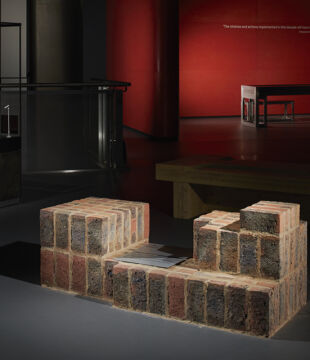
Details
Location: Sudbury, Suffolk
Brick Manufacturer: Bulmer Brick & Tile Company Limited
Brick Name: Bespoke
Architect: ZMMA
Contractor: Thomas Sinden
About the project
Our project transforms Gainsborough’s House, Sudbury, into an international centre for Thomas Gainsborough at the site of Gainsborough’s birthplace and childhood home. The new centre opens-up access to the most extensive display of work by Gainsborough anywhere in the world. Displays explore the inspiration of the Suffolk landscape on Gainsborough, Constable and more recent artists, like Cedric Morris.
With support from NLHF, the £10 million transformation includes a new building as well as renovating and reconfiguring the Grade I listed historic townhouse and restructuring the whole Museum campus. The new building replaces a 1930s labour exchange, on a semi-industrial site in the centre of the town, located between a large silk weaving factory and smaller-scale buildings in Weavers Lane. The exterior is built of locally hand-made brick, knapped flintwork and Corten steel, under a copper roof and adds new galleries, entrance and activity spaces to the Museum complex. It rises to three storeys to lift visitors in the Landscape Studio above Sudbury’s rooftops, with a great picture-window giving a panoramic view over Gainsborough’s landscape. The new building’s rising zig-zag roof form creates a tall, sky-lit temporary exhibitions gallery at ground floor and, at its highest point, a folded ceiling profile over the Landscape Studio.
An overriding principle in our design approach was to use materials that are self-finished, through-materials that develop with age and require little maintenance.
We became fascinated by the material qualities of Sudbury’s townscape and the process of silk weaving in the town. Discovering that two miles away there is a brickyard producing handmade bricks with clay dug from its land, and that flint was scattered across the fields, we decided to develop a building that used materials directly from Gainsborough’s Suffolk landscape.
With the opportunity of bricks being cast in moulds by hand to our specification, we developed a shape and pattern for the brickwork as if woven across the building’s elevations. Facing the public approach on Weavers Lane, the elevation inflects gently, giving scale and modulation to the façade and the deep texture of the brick bond is animated by light and shadow casting across the façade’s facets as the sun shifts.
At street level, the plan is cut away, widening the pavement approach, and a colonnade of rusty Corten steel ribs subdividing dark blue-grey knapped, rough flintwork walls, includes the new bronze, glazed Museum entrance.
Window cills and entrance thresholds are cast gunmetal and internal floor grilles are pre-rusted cast iron, all chosen because of their substance, colouring and ageing characteristics as well as the pleasure of them being cast in moulds, like the bricks and like the precast black concrete staircase.
Locally produced bricks were also used to create a new snaking Crinkle Crankle wall in the garden, a historic typology prevalent in the area. The wall is dotted with hard carved bricks produced from a prisoner engagement programme with a local prison.
Sponsored by Northcot Brick
















